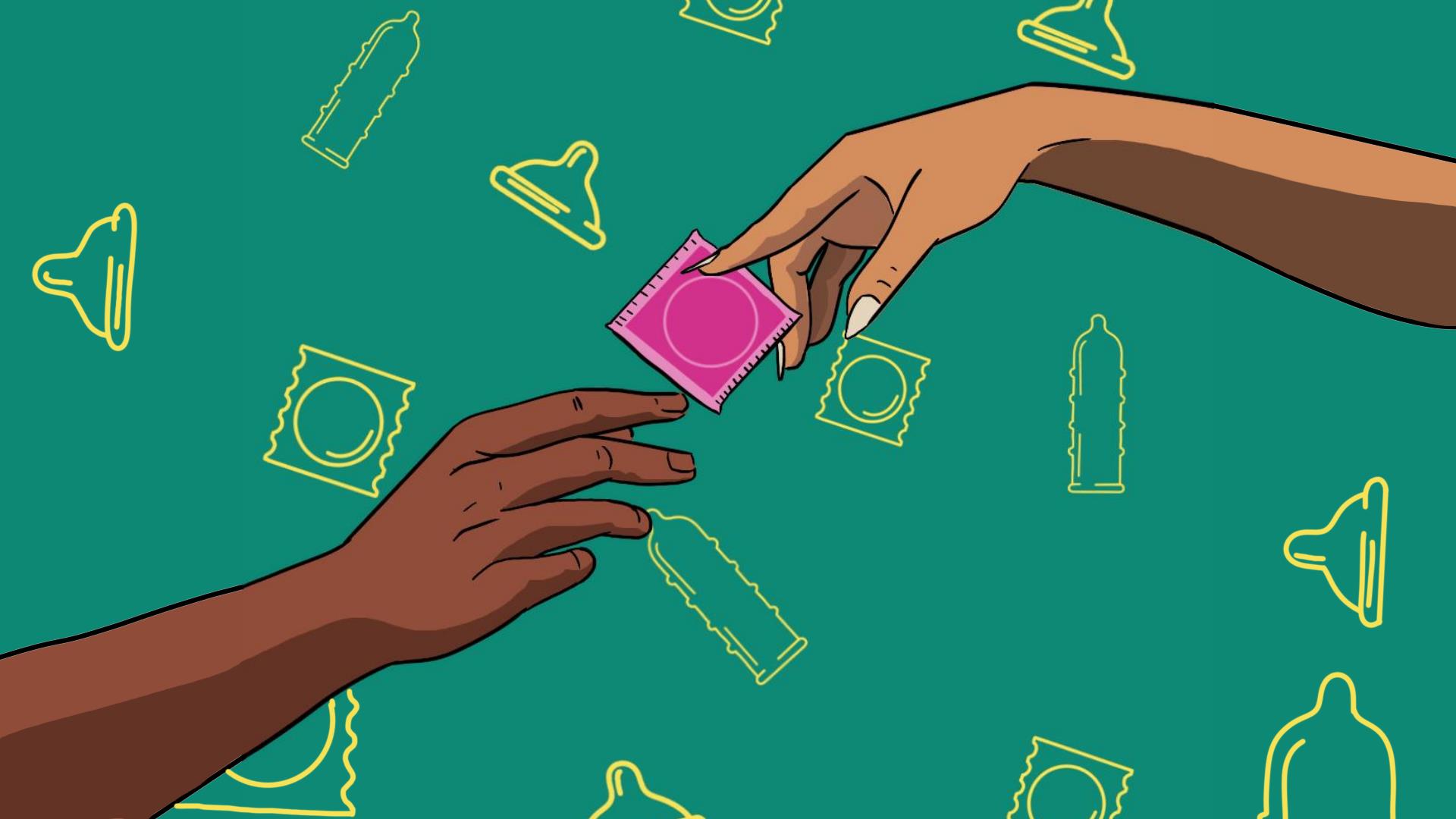
Condom
What is a condom?
A condom is a simple and effective tool for preventing both unintended pregnancies and sexually transmitted infections (STIs), including HIV. Condoms work as a protective barrier, stopping sperm from reaching an egg during sex. They also prevent direct skin contact and the exchange of body fluids that can spread infections.
In many African communities, conversations about condoms are often avoided due to cultural or religious beliefs. However, condoms have saved millions of lives by reducing the spread of HIV and other STIs. They are widely available in pharmacies, hospitals, and even some local shops for little or no cost.
What are condoms made of?
Most condoms are made from:
- Latex: A natural rubber that is flexible and reliable.
- Polyurethane: A plastic alternative for people allergic to latex.
- Polyisoprene: A synthetic version of latex that provides a similar feel.
Condoms come in different sizes, textures, and even flavors, making them suitable for different preferences. Some also come lubricated for extra comfort, while others contain a sperm-killing chemical (spermicide) for additional pregnancy prevention.
How common is condom use in Africa?
Condom use varies across African countries. In Ghana, for example, a 2022 study showed that only about 34% of sexually active individuals regularly use condoms, despite their availability. In some rural areas, lack of education and myths discourage people from using condoms, leading to high rates of unintended pregnancies and STIs.
How effective are condoms?
When used correctly, condoms are 98% effective at preventing pregnancy. This means that only 2 out of 100 couples using condoms will experience an unplanned pregnancy within a year. However, if not used properly, the effectiveness drops to 85%.
Condoms also provide strong protection against STIs, especially those spread through fluids, like:
- HIV/AIDS
- Gonorrhea
- Chlamydia
- Trichomoniasis
For infections that spread through skin-to-skin contact, like genital herpes and human papillomavirus (HPV), condoms reduce but do not completely eliminate the risk.
How to use an external (male) condom
- Check the expiration date and ensure the packet is not torn.
- Open carefully. Do not use your teeth or sharp objects.
- Wait for an erection before putting it on.
- Pinch the tip of the condom to leave space for semen.
- Roll it down all the way to the base of the penis.
- After sex, hold the base while pulling out and dispose of the condom in a bin. Do not flush it down the toilet.
How to remove a condom?
- Hold the base while withdrawing to prevent spillage.
- Wrap it in tissue and dispose of it properly.
- Never reuse a condom.
Tips for effective condom use?
- Always use a new condom for each sexual act.
- If a condom is put on backward, throw it away and use a new one.
- Do not use two condoms at the same time (this increases the risk of breakage).
- Store condoms in a cool, dry place (not in wallets where they can get damaged).
- Use water-based lubricants with latex condoms (oils like Vaseline can weaken latex and cause tears).
- Combine condoms with other birth control methods like pills for extra protection.
What if a condom breaks?
If a condom tears during sex:
- Stop immediately and withdraw.
- Dispose of the broken condom and replace it with a new one.
- Consider emergency contraception (morning-after pill) to prevent pregnancy.
- Get tested for STIs if needed.
Disadvantages of condoms?
While condoms are one of the safest birth control methods, they have some drawbacks:
- Can break if not used properly.
- Some people are allergic to latex or spermicide.
- Some individuals feel they reduce pleasure, but choosing the right size and type can help.
Common myths about condoms?
- “Condoms reduce pleasure.” Modern condoms are ultra-thin and designed for comfort. The right fit enhances pleasure, not reduces it.
- “Condoms come in one size.” Condoms come in various sizes for a comfortable fit. A poorly fitted condom can break or slip off.
- “Using two condoms is safer than one.” Using two condoms increases the risk of breakage due to friction. One properly worn condom is enough.
Why condom use is important?
In many African countries, condom use is essential in the fight against HIV/AIDS and unplanned pregnancies. Governments and health organizations continue to distribute free condoms in public health centers to encourage safe sex practices.
By using condoms consistently and correctly, individuals can protect themselves, their partners, and their families from preventable health risks.
